A hat trick and a top hat
The last year of Neil Joseph
I have a copy of the photograph of the 1926 Royal team given to me by my uncle (see below) which includes my Dad but I wasn’t really driven to make inquiries regarding the whereabouts of the 1927 photo, nor did my father show much interest. To me the 1926 team had Neil Joseph in it and very little else mattered. My Dad is also at the back and so I have a record of him, as well as my uncle, the captain.
Standing: P.N Bartholomeusz, Major L.V. Gunaratne, Major H.L. Reid, Mr. L.H.W. Sampson, Mr. T.D. Wijesinghe, E.G.L. Lieversz.
Seated: W. Ludovici, N.S. Joseph, D.W.L. Lieversz (Capt), H. Edward “Polo”.Wijetunga, H.C. Dharamaratne.
Ground: Charles Harold Wilfred de Soysa (Bishop), Albert Eustace Ratnarajah “Bunnie” Paul, N. Kandiah, P.K. Ranhotty
In 1926 the school second and third elevens were done away with and a junior under 16 level was begun. Matches were played against St. Thomas’, Wesley, St. Josephs and St. Benedicts, and occasionally against Ananda. It is more than likely that cricketers like JR Wilson, FC de Saram and Sargo Jayawickrema made the under 16 team in 1926.
In 1927 Lindenberg makes the first non stop solo transatlantic flight, Shorty Snowden does a marathon dance at Harlem and names it the Lindy Hop, Hitler holds his first Nazi meeting, Menuhin makes his Carnegie Hall debut, the first talking picture is screened, Harry Belafonte and Sydney Poitier are born, Herman Hesse releases Steppenwolf and the St. Thomas’ chapel was completed and consecrated. And on 25th March of that year HE Wijetunga led Royal in her traditional encounter against St. Thomas’. A chance encounter on the second day of the 2016 Royal Thomian set in motion the steps which resulted in me obtaining the 1927 Royal cricket team photograph.
Meeting Harsha
Ex admiral Thisara Samarasinghe took me to the Orient Club for a dinner organized by Royalists who had left school in the seventies – roughly the same demographics as those who patronize the Taverners enclosure. It was on this occasion that I first met Harsha Wijetunga, the son of the 1927 captain who advised me that he had the original of the 1927 team photo with my Dad in it. I made it a point to follow this up when I could although there was so much on my agenda that I was unable to make arrangements to view the photograph.
Fortuitously, he attended a lunch hosted by Dhyan Peiris, at the Library of Cinnamon Lakeside, on 25th March. While we were settling into the unique old worldly ambience of the library, after taking our first sip of drinks served off a trolley, Harsha brought in the photograph and blew my mind away. Here is Dad looking smarter than I ever thought he could be and almost unrecognizable. He also looks a lot more settled as a Royal team member and a lot more self-assured. In fact the entire team exude a sense of style befitting a different era. I immediately requested that a copy be sent to me because the photograph seemed so vintage and glamorous.
Captain in waiting
The above photo is from the Midsummer term 1926 magazine (Courtesy of Ranjit Gunasekera)
Royal College First XI, 1927
I have been told that in 1926 following a defeat in the first game of the season Douglas Lieversz went up to MIC L.V. Gunaratne and offered to resign. But the master in charge would hear nothing of it. So, my uncle stayed on as captain and went on to lead Royal to victory against STC.
I always believed that Royal lost to St Joseph’s but a program which came out in 1997 to celebrate the centenary of the Royal-Joes encounter` lists the 1926 game as a draw. Hence, who did Royal lose to which made my uncle want to throw in the towel?
In 1927 Royal beat St Joseph’s by 166 runs. Royal made 200 and 114 for 3 declared. St. Joseph’s scored 102 and 46. In the second innings the Royal captain had the figures of 7 for 11, including a hat trick.
(Courtesy of Harsha Wijetunge)
I would surmise that Royal went into the big match as favourites. Yet Wijetunga failed to capture a wicket and STC were victorious.
Royal never recovered from collapsing for 78 in the first innings. Did the big score posted by STC in the first innings rattle them? Was the Thomian total a surprise as much as much as totally unexpected score of the 197 made by STC in the first innings of the 1962 Royal Thomian against a formidable bowling attack?
My dad top scored in the first innings with 31. But curiously, he was not out 20 in the second innings out of a total of 247, going in at number 5. Assuming he hadn’t retired due to injury, his stonewalling makes me seem pretty aggressive by comparison. As my good friend Kari would attest if I had batted that long I would have made a fifty in singles.
This was the last game which FC de Saram watched because he made the team the next year and played in four Royal Thomians, three of which Royal won. The colonel stated in an article in 1979 that he took Royal’s defeat of 1927 harder than her defeat of 1924 (see attached). But according to Harsha his Dad didn’t dwell on the defeat being content that there was a result, as was usually the case in those days.
LITTLE KNOWN FACTS BY F.C. De SARAM I started watching Royal-Thomian matches In 1923 and was a spectator till 1927. I took part in the matches between 1928 and 1931. The results of these matches are available elsewhere and I shall not waste space setting them out. Suffice it to say that out of these nine matches we won six, S. Thomas’ won two and one was drawn. I shall deal with what are, perhaps, little known facts and what struck me in particular. I joined the school in 1924 because I had failed the Entrance to the 2nd Form in 1923. My father gave me another chance the following year and I got in. Perhaps, if I failed again I would have tried to join St. Thomas’. I remember the 1923 match only because of Henry Meedeniya’s bowling and also because Cecil Dias caught and bowled Rudolph Jayatilleke with the third ball of the last over. Henry Meedeniya had a beautiful high action. His pace could be described as medium-slow and he was ever so accurate. Chippie Gunasekera later told me that Cecil Dias had asked Cecil Belleth to bowl the last over and that he had refused. We lost the Royal-Thomian in 1924 and I believe that was the year in which we lost every match. I have heard there was dissension in the side. The matches in 1925 and 1926 belonged to Neil Joseph. Up to that stage of my life I had never seen anything like his batting. He square cut or off drove, it struck me, as he willed. Of course, it must have been more scientific than that. As a small boy I noticed in 1926 that Harold de Soysa and Neil Joseph took several wickets with leg spinners. Barney Gunasekara who was in the same Form as I was from the day I went to school until he took to science and I took to Arts perhaps, it was in the Upper Fourth, was already bowling leg breaks and googlies. We discussed the matter and I started practising leg breaks and googlies and enjoyed some success with them. Later my uncle D. L. de Saram advised me to give up slow bowling and to bowl as fast as possible, like he did. He said one did not have to practise bowling that way as much as one would have to do, if one was a slow leg spinner for that is the fate of the slow leg spinner. I can only say a good leg spinner often helps his side to win, and that on occasion he can be devastating. Come 1927 and I was more conscious of the defeat that year than the one In 1924. My form began to set its sights on playing in the match.
In 1928 there were two of us, Hilton Poulier and I, the others were all older than us. In 1931 there were five of us, Russell Heyn, H. R. (Podgy) Vandort, H. S. R. Goonewardena. Gammon Labrooy and I. The others were all younger than us. I suppose that is the usual pattern of selection of school teams. Occasionally a boy is injured and cannot play in the Royal-Thomian. A. L. Gunasekara would have played in 1930 but he broke a finger and H. S. R. Goonewardena played instead. In 1931 my brother F. R. was diagnosed by a doctor as having a murmur in his heart and Podgy Vandort kept wickets in his place. As I pointed out there was only one draw in the nine games I have referred to. That was in 1928 but the match was very exciting with the Thomians struggling for survival with two wickets In hand after we had declared. In the Jubilee Match of 1929 at lunch time on the second day S. Thomas’ had four runs to make to avert the follow-on with the last pair in. N. Kandiah’s father was seriously ill, so he went home for lunch. When we walked out to field N. Kandiah had not returned. Sargo Jayawickrami as Vice-Captain was about to bowl when N. Kandiah ran on to the field with a shy smile of apology on his face. He then bowled out the last man in his first over and S. Thomas’ followed on and we won a few minutes before time. In 1930 we won easily and the match could be called “Barney Gunasekara’s match.” The histories contain the details. In 1931, late on the second day the Thomians were playing for a draw. At the rate they were going they would have taken too long to get to 200 runs. We remembered that Chippie I Gunasekera had told us that a new ball always upset a batting side. We gave them the necessary number of runs by bowling wides on the leg side, each of which went for four. Very quickly we got the new ball and the chance we needed. Tom Rock got N. A. de S. Wijesekera who was our stumbling block, having made a brilliant century, and the rest went for very few. We made the] required runs just before time to win by 8 wickets. I shall attempt to give some reasons why drawn games were rare In those days. In my opinion this was the era of Chippie Gunasekera (L. D. S.) and to those who knew him, he represented a man who knew what he wanted and knew how to get it, observing at all times the spirit and the letter of the Laws of the game. He played in the first three games 1 referred to and I know he coached the team from 1928 onwards. I cannot remember what he was doing in 1926 and 1927. To put it shortly, it was reliably rumoured that Warden de Saram once prayed to his God that Chippie Gunasekera should be destroyed. Later, when he had met him, he confessed to me that he could not understand how he could have been such a wicked man, since he found him to be, an awfully nice little chap. But that was the extent to which his opponents feared and hated him j before they got to know him. As to how he helped me, one story will suffice. He told me I was unfortunate in that my family had a reputation for being bad fieldsmen and that I would be suspect in this regard. I was slow on my feet and he advised me to stand at first slip and never to take my eye off the ball, I had to catch my first two catches and then what happened did not matter. I believe that in due course I took my fair share of catches. So far as I remember, consequent on his advice, we gave very little away in the field. A man was run out if he gave his opponents half a chance and very few catches were dropped. We were trained never to give two runs, if the shot deserved only a single and to cut off boundaries if humanly possible. These few paragraphs may contain the reasons why Royal was so successful in this era and why a drawn game was so rare. In 1979 we propose to play a 3-day game. Is this a sign of frustration and despair? ! trust that the cricketers of both teams will be determined to play for a win from the start. |
Sydney de Soysa is also in the 1927 Royal side and Dudley Senanayake in the Thomian team. The latter scored 48 coming in at number 8, and bolstered the Thomian tail.
Royalist AER Paul, wicket keeper, appears to have died in an accident not long after the 1927 game and there is a picture of him in Dad’s photo album, which indicates that they were good friends.
The obituary is from the Midsummer term 1927 College magazine, and the photo of Paul is from the Christmas term 1927 College magazine. (Courtesy of Ranjit Gunasekera)
Ludovici, who was Royal’s best performer at the 1927 big match, scoring 61 and capturing 7 wickets, also died young. I presume that, unlike Paul, he died after leaving school?
Sydney de Soysa was in England at the same time as Dad. A photo of him, from Dad’s album, at breakfast, features him with a person who looks a lot like Colvin R de Silva.
One miss and a near miss
My Dad claimed that he was due to captain 1928 but left school before that, something he regretted. This claim gains credence by him sitting left of HE Wijetunga, as did the latter vis a vis Douglas Lieversz in 1926. He therefore missed out leading such luminaries as FC de Saram and S Jayawickrema, people he spoke highly of. He would also have had JR Wilson playing under him.
On the day before I first glimpsed the 1927 team photograph, I had lunch with my 1968 skipper, whom I consider one of the best captains I have had the privilege of playing under. He understood the game inside out, and introduced me to the finer points of the game during a friendship commencing at Royal Primary. He was one of those rare captains who fielded at gully, surely the most difficult position to field at. Ranjit set us up for our defeat of STC in 1969. As Dr Ajita Wijesundera put it so succinctly – “What Ranjit started, Eardley completed”. So, I take great pride in the picture of Ranjit and me returning to the pavilion for lunch on the first day of the 1968 Royal Thomian. When this picture was taken (by Harry Gunasekera) I had no idea that I would be Ranjit’s successor and so the picture turns out to be one of two Royal cricket captains.
Unlike my Dad who could have captained by natural progression I was captain by accident. But unlike my Dad who left school by his own accord, I was sacked by the Principal before I was appointed captain.
The pattern for the 1968-69 season was set when, on 15th June 1968, less than a week after the assassination of RFK, and while in the throes of grief, my father received a letter dated 13th June from the Principal asking him to remove me from school because he was unable to provide classes for the subjects I was taking. The letter arrived on a Friday.
It seemed that the Principal wanted to act sooner rather than later, before the idea of me captaining was firmly entrenched in the minds of the master in charge and coaches, and accepted by the school itself. And so he made his move approximately two weeks after I had inherited the captaincy by default.
I had been warned that this would happen by someone in the know. And so I tempered my elation and when the 1968 captain referred to me as skipper at the school rugby game against Zahira at the CR & FC grounds, the day that the letter arrived, I was non committal and lukewarm in my response but couldn’t bring myself to explain my negativity. Who would believe that the Principal had sacked me and killed all my dreams.
I had given up hope but not my father. On the Saturday I collected the TIME and LIFE magazines which my mother had subscribed to, and attended a movie at the Liberty cinema. The lead stories in the magazines were the death of RFK and my sadness was compounded by the prospect of me missing out on the school cricket captaincy. I was fatalistic and tried to obtain consolation from the thought that it was always too good to be true. I returned home despondent to a smiling Dad who said that I didn’t have to leave school after all.
Eardley Snr driving to the office of the Education Commissioner and having him prevail upon the principal to rescind his decision resolved the problem. The episode concluded with a chat between Eardley Snr and the Principal at the latter’s office with latter complaining that I had a tendency to sit and idle at the room across his. My Dad had missed out on captaining Royal in 1928 due his own fault. Me captaining Royal was his last shot at redemption and he wasn’t prepared to let the Principal steal his dream.
Hey, Hey, Bogoday!
How many boys did you sack today?
(With apologies to Time Magazine, which at the time published the limerick “Hey hey LBJ, how many boys did you kill today?” and kind courtesy of the Daily Noise, the co editor of which was yours truly)
The Principal knew very well that I was in line for the captaincy. That this didn’t stop him from attempting to sack me revealed a malicious streak on his part. Later in the year, after I had been appointed captain, he remarked at a gathering of prefects to discuss a new round of appointments, that the cricket captaincy did not automatically entitle one to be a prefect.
Post 1927
In retrospect I wish I had obtained more information about the 1927 game, and his life experiences in general, from my father. But as is often the case, when one is young, the experiences of one’s forebears is considered boring when compared to one’s own experiences. For a long time I wasn’t one to show much interest in the past because I was too self-focused on what I was doing, which took precedence over everything else.
Now I am a chronicler of the past. But that only came about due to my anthropological training and after writing up the history of a Sinhalese village in Upper Uva. How I wish I could interview those long gone.
After leaving school H E Wijetunga played for the SSC where he excelled as a bowler. He played alongside cricketers such as Chippy Gunasekera, MK Albert and Cyril de Zoysa. The original photograph of the 1927 team used to hang in his office room of his residence Arethusa Lane, Wellawatte. It now hangs at Harsha Wijetunga’s residence at 54 Davidson Road Bambalapitiya. Somewhere along the line Wijetunga amended the captions because they now make reference to the career paths of every member of the team.
H E Wijetunga qualified in law and had a successful practice as a lawyer before his untimely demise in 1975. My father qualified as a statistician and passed away 9 years later.
After leaving school I think that my father worked briefly in a bank. I recall him talking about some of the pranks he was up to at the shroff’s expense. But playing for the Customs he scored two centuries in 1928 (157) and 1931 (102) .
He did play cricket for the Colts but didn’t make much of an impact because SP Foenander in his History of the Colts makes a cursory reference to my Dad as someone who did useful work for the Colts as a batsman. But he is in the group photo commemorating the 60th anniversary of the club (see below).
Seated (L to R): J.R. Murray, A.C. Amath, V.S. de Kretser, Dr. S.P. Joseph, Dr. Allan Raffel, A.T. Pollocks, C.W. Van Geyzel, S.P. Foenander, B. De Kretser
Standing (First Row): A.E. Assauw, A.M. Caldera, D.W.L. Lieversz, L.V. Jayaweera, E.H. Joseph, L.A. Joseph, S. Oorloff
Standing (2nd Row): H.L. de Kretser, A. Meadows, W. Aiyadurai, E.G.L. Lieversz, P.A Swan, F. Melder, D.V.L. de Silva
(Picture courtesy of Foenander 1941)
Off to England
In January 1934 my Dad sat for the University of London matriculation examination and obtained a second division pass. (I have inserted the pass list for candidates from Ceylon at the back of this article because it provides an insight into the ethnic make up of students and the schools they studied in.)
He left to study at the London School of Economics and while attempting to return in 1939 his ship was attacked and disabled. He lost his best friend Ben Dias in the attack. The story goes that when the sirens went off my Dad hesitated to finish his drink while Dias who rushed out of the bar took a direct hit. Dad returned to Ceylon in 1946 and returned in 1948 to complete his study. Dad and Mum stood in line at the Oval to witness Bradman’s last innings and Mum chided him for wasting her time to watch a batsman who scored a duck.
Dad joined the NCC and Harold de Andrado described him in an article on the NCC as a non-playing club stalwart. My Dad was either the cricket or ground secretary for a while and the story goes that on one occasion he double booked and four teams turned up on the same day.
Hence, it was at the NCC where the romance of cricket took a hold on me. I used to climb up the terraces and drop myself on to the walkway leading to the dressing rooms. And the smells of linseed oil, chunam and freshly mown grass became synonymous with cricket. Dad returned to the Colts when Darrell was playing for the Colts and this was the time I threw my lot in with the Colts and became diehard.
When Dad was in England he played for the Indian gymkhana and a picture taken of him at a particular ground used to hang on the walls of our second home at Sri Saranankara Road, Pamankade. I believe the picture also used to hang on the walls of the house at C84 Gregory’s Avenue, Colombo 7.
I also have a group photo taken in England (see below). I believe that his was the Indian gymkhana team he played for. He is one of six non-Caucasian faces in the photo. These pictures are probably taken before the outbreak of WWII.
I wonder how many photos of Royal and Thomian cricket teams are hanging on someone’s wall or packed away somewhere? They all have stories to tell and connections to be made, if someone cares to take the trouble.
An interesting coincidence
Interestingly, I stayed this time with Dr Ajita Wijesundera, a childhood friend whom I’ve known for 60 years. We grew up together at Gregory’s Avenue, and were the mainstays of a softball cricket group, which included two Thambimuttus (St. Peters’), Sivakumaran (STC) and SP Sellayah (occasionally) (Royal). Ajita happens to be connected to HE Wijetunga from his maternal side.
HE Wijetunga’s father Charles, a surveyor, standing in the middle of the photo below, was brother to Ajita’s maternal grandmother who married a Weerasekera, which made Ajita’s mother Irene and HE Wijetunga first cousins. Irene’s sister Mabel attended St. Bridget’s’ Convent which is located opposite the former SSC grounds where the Royal Thomian was played in the twenties. Mabel recalls a six hit by Neil Joseph (1925 – 1926) which landed on the premises of the school. It is likely that the Weerasekera and Wijetunga families followed the big match closely and rooted for Royal?
(Picture courtesy of Ajita Wijesundera)
– Eardley Lieversz


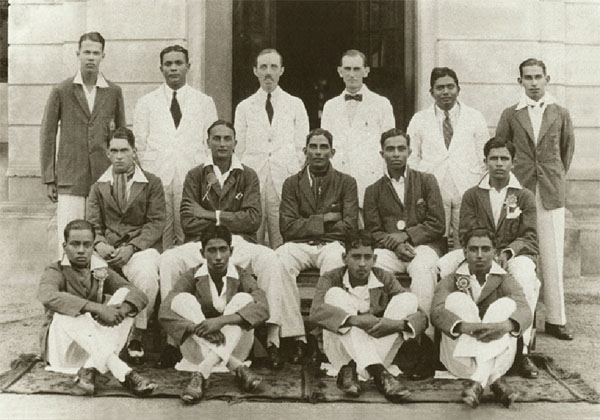
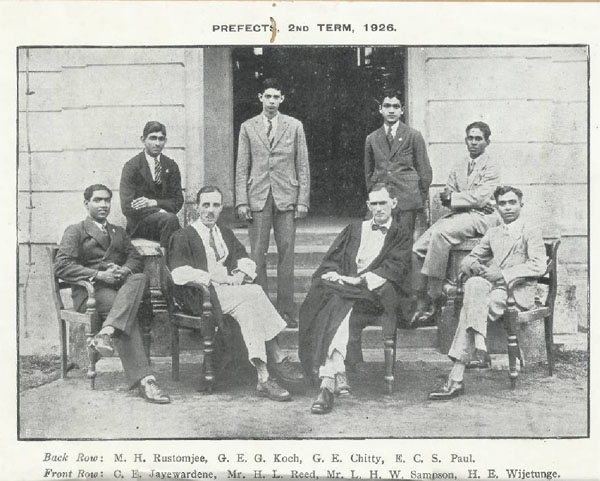
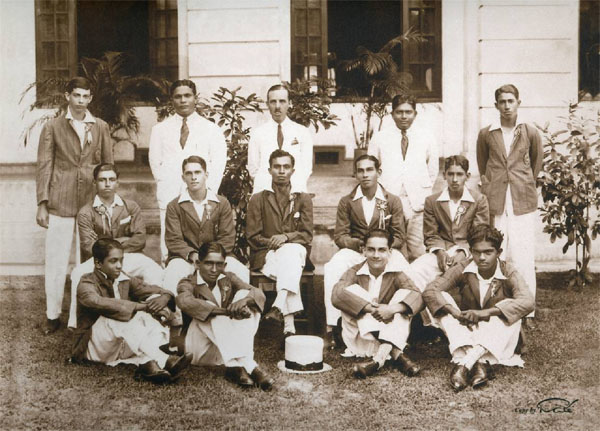

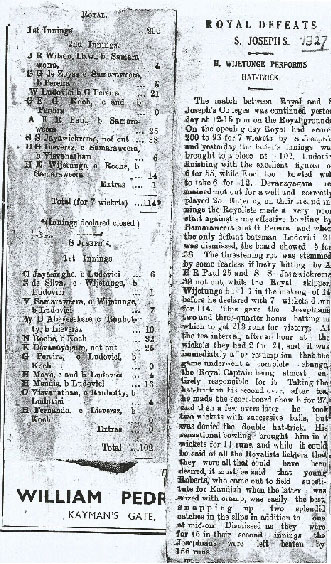
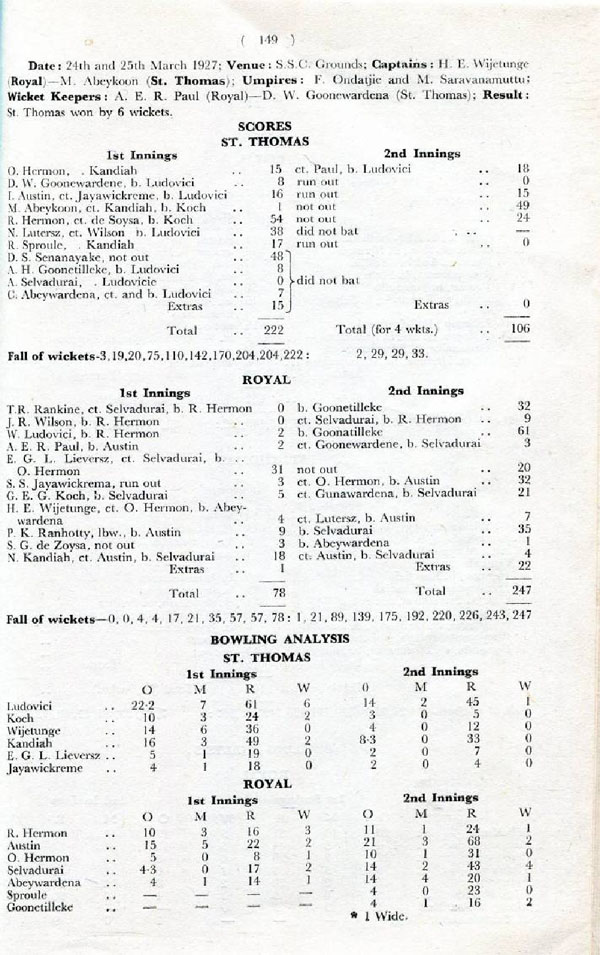
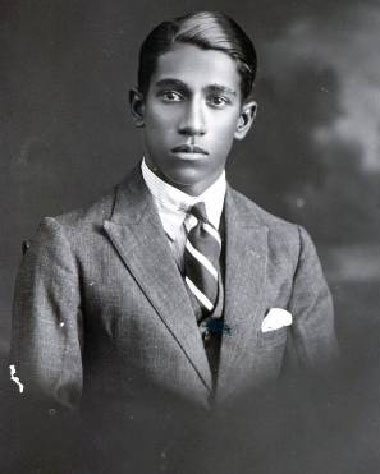
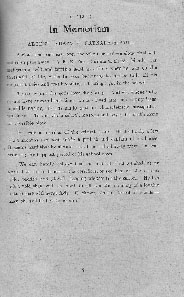

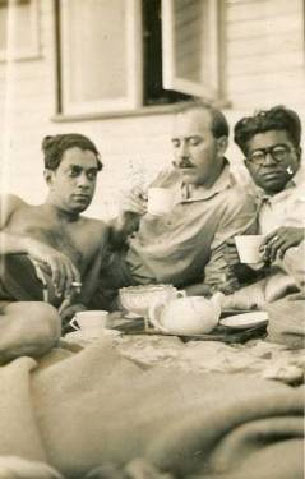
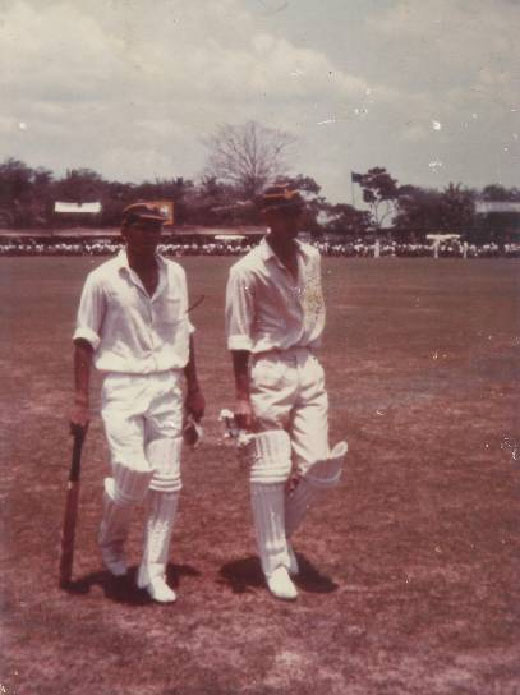
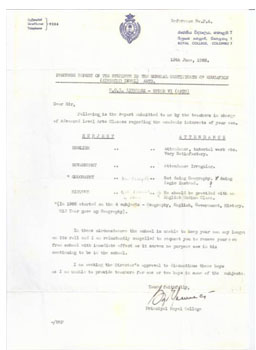
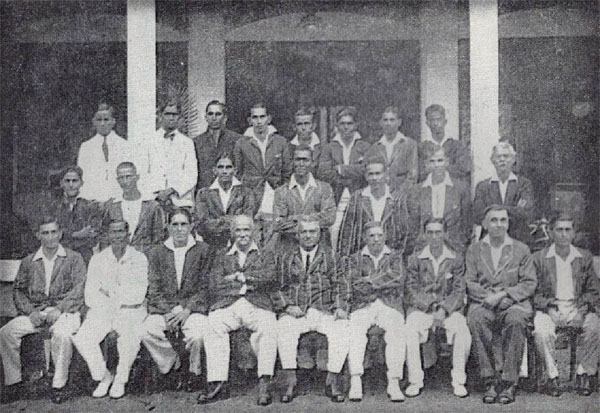
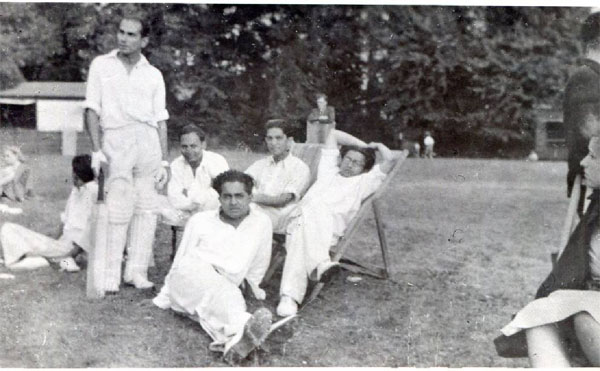
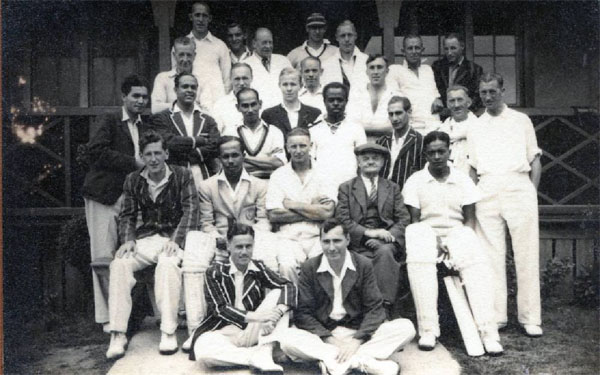


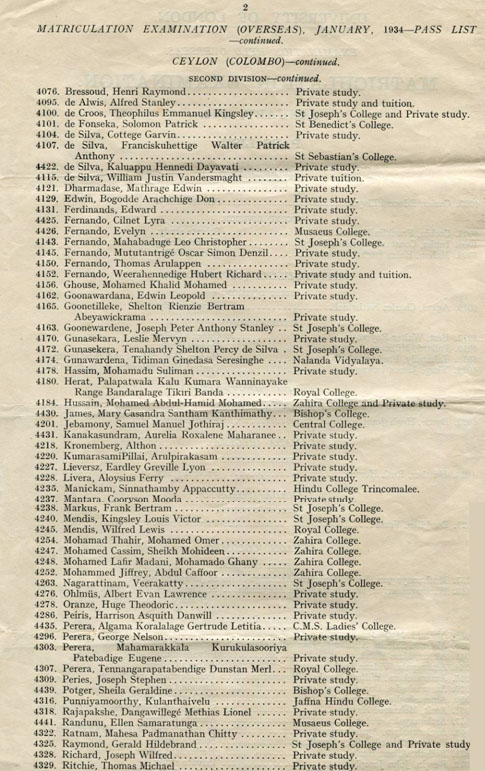
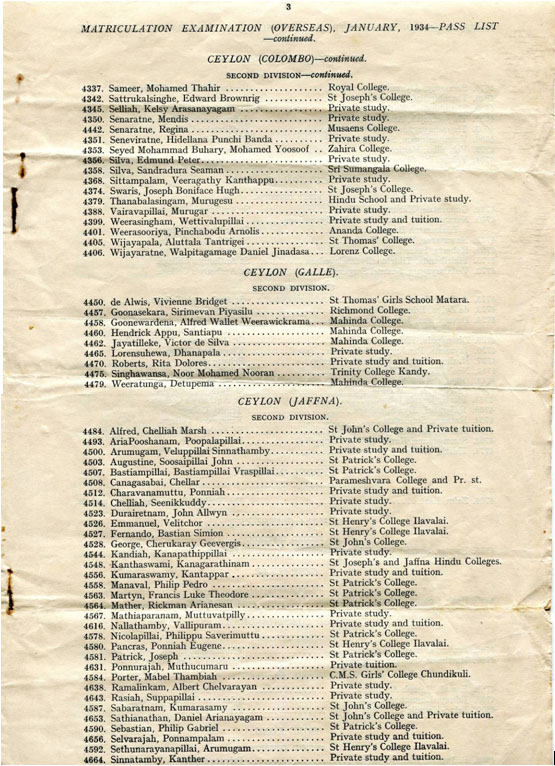








No Comments